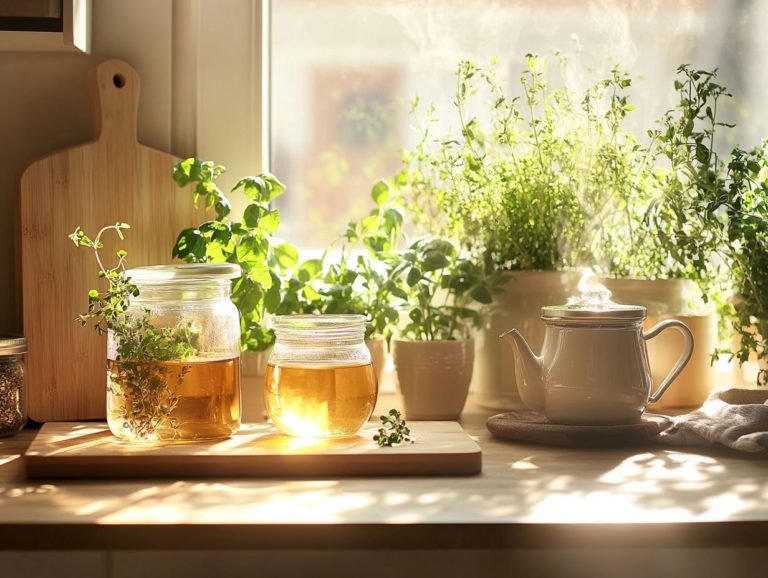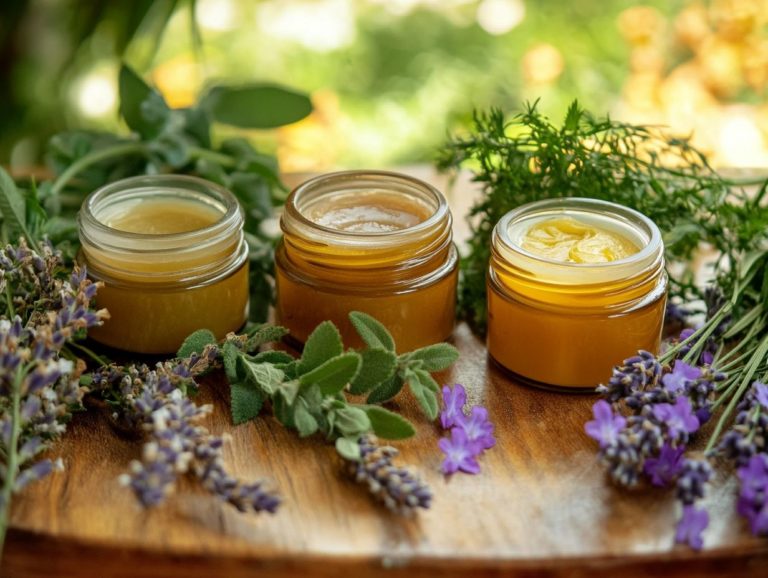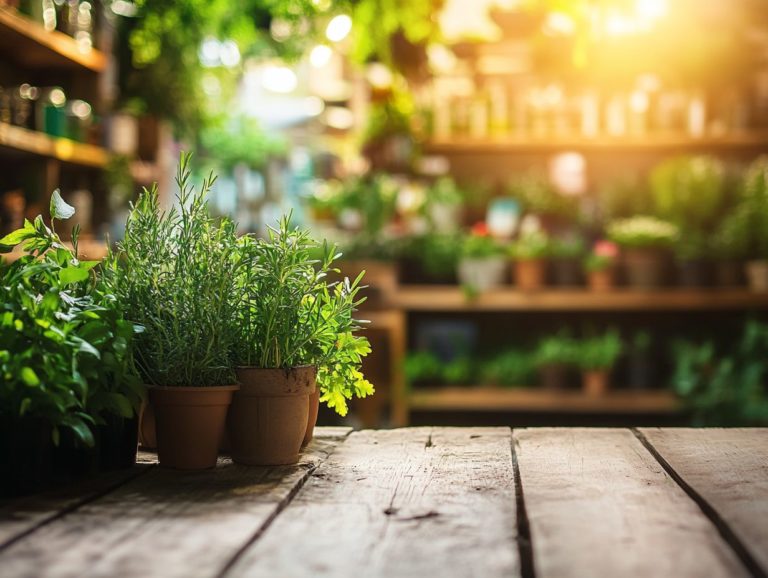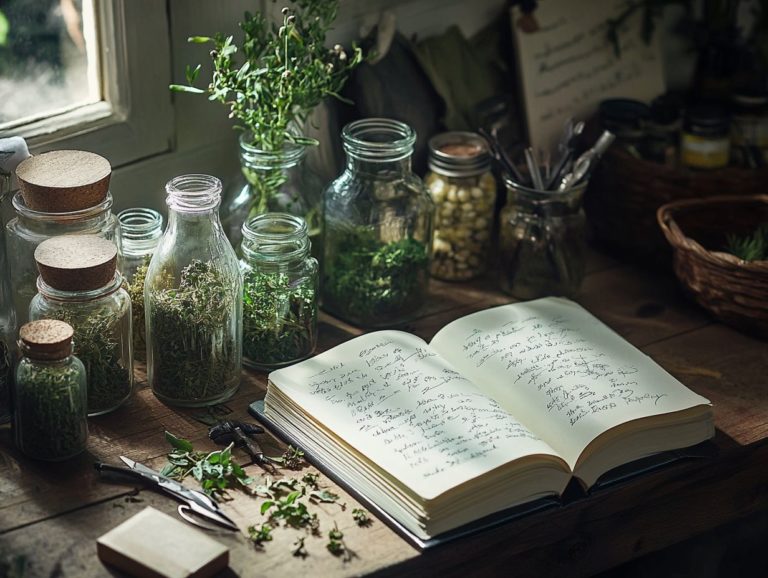How to Prevent Herbal Remedy Contamination?
Herbal remedies have become increasingly popular for their natural healing properties. However, contamination remains a critical issue that can compromise both effectiveness and safety.
Understanding the problems with herbal remedies, along with recognizing common contaminants and their sources, is essential for anyone aiming to integrate these remedies into their wellness routine.
Let’s explore the health risks tied to contaminated herbal products, share best practices for prevention, and provide guidance on selecting high-quality, pure herbal remedies.
By arming yourself with this knowledge, you can confidently ensure that your herbal choices truly enhance your health.
Contents
- Key Takeaways:
- Understanding Contamination in Herbal Remedies
- Common Contaminants in Herbal Remedies
- Health Risks Associated with Contaminated Herbal Remedies
- Keep Your Herbal Remedies Safe: Prevention Tips
- Ensuring Quality and Purity of Herbal Remedies
- Frequently Asked Questions
- What is herbal remedy contamination and why is it a concern?
- How can I identify if an herbal remedy is contaminated?
- What are some common sources of herbal remedy contamination?
- How can I prevent herbal remedy contamination at home?
- What should I do if I suspect an herbal remedy is contaminated?
- Are there any regulations in place to prevent herbal remedy contamination?
Key Takeaways:
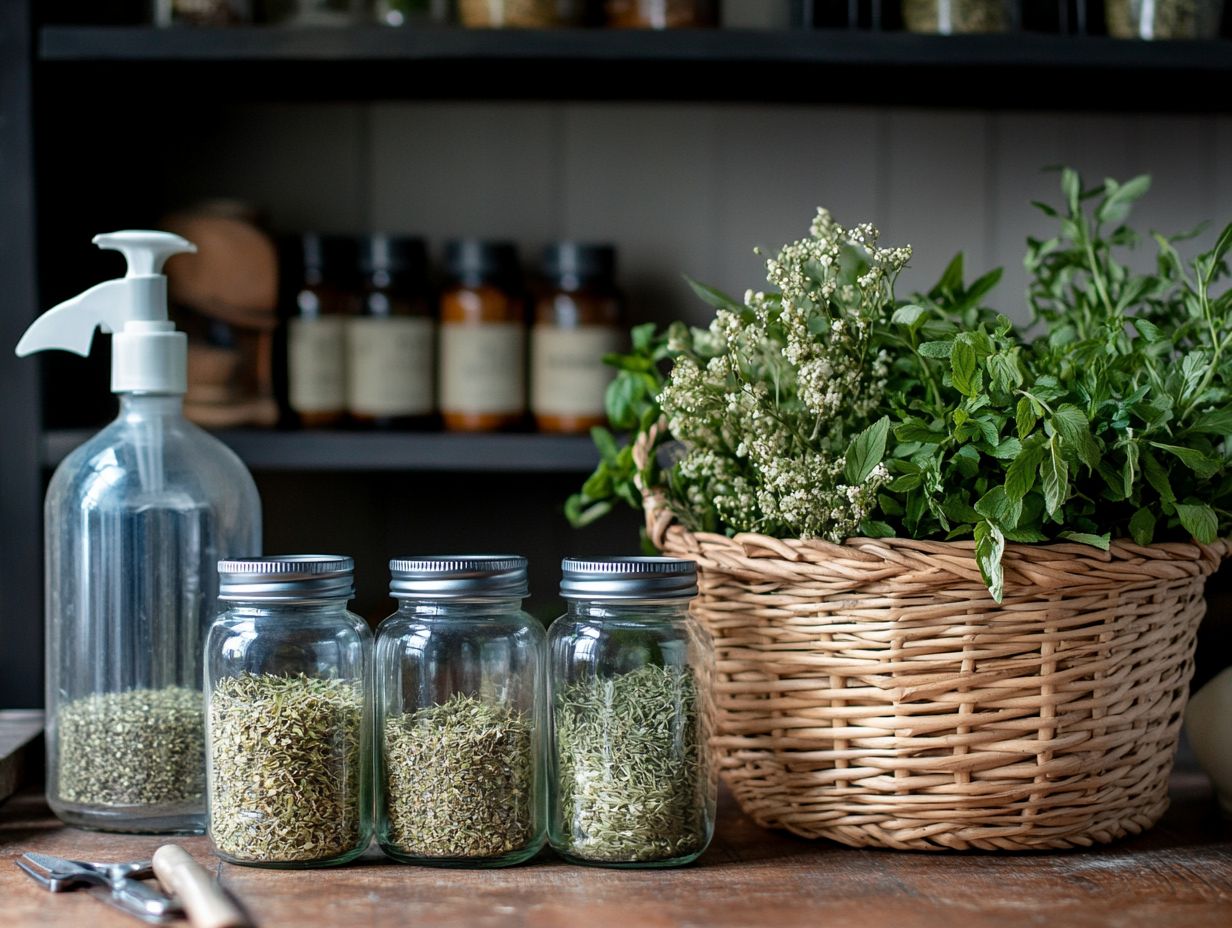
- Know the signs of contamination to stay safe while using herbal remedies.
- Common sources of contamination, such as pesticides and heavy metals, can lead to serious health issues that you need to avoid.
- To prevent contamination, follow best practices and choose high-quality products that have been tested for purity and safety, considering factors like active ingredients and plant parts.
Understanding Contamination in Herbal Remedies
Understanding the problems with herbal remedies is essential for ensuring safety and efficacy, especially since these products often don t meet the rigorous quality standards of conventional medicines.
Contaminants can emerge from various sources, including improper handling, environmental factors, and even the specific plant parts used. These may sometimes carry harmful microorganisms like Escherichia coli, Salmonella spp., Pseudomonas aeruginosa, and Staphylococcus aureus.
It’s vital to be aware of these risks for anyone who values their health and wants to navigate the potential issues associated with herbal remedies.
What is Herbal Remedy Contamination?
Herbal remedy contamination is a serious concern. It refers to the presence of harmful substances or microorganisms in herbal products that can lead to significant health complications and safety hazards.
These contaminants can include pesticides, heavy metals, and pathogenic bacteria. They may infiltrate these products through various channels whether it s contaminated soil, improper handling during harvesting, or inadequate processing methods.
For example, herbal remedies can absorb toxins from their environment. If they aren t rigorously tested, they can pose serious risks to you as a consumer, especially regarding health complications.
The potential health complications can range from mild allergic reactions to severe issues like organ damage or toxic responses, underscoring the critical importance of safety when selecting herbal treatments.
Common Contaminants in Herbal Remedies
Common contaminants in herbal remedies can significantly affect their quality and safety. This presents health risks that are particularly concerning for vulnerable populations, such as the elderly and children.
This warrants a focus on herbal registration to ensure the safety of these products.
Contaminants can include microbial agents like Escherichia coli and Salmonella spp., which pose serious health threats, as well as heavy metals that undermine the overall quality standards of these herbal products.
It’s crucial for anyone utilizing herbal remedies for health purposes or home treatments to grasp the different types of contaminants that may be present.
Potential Sources and Types of Contaminants
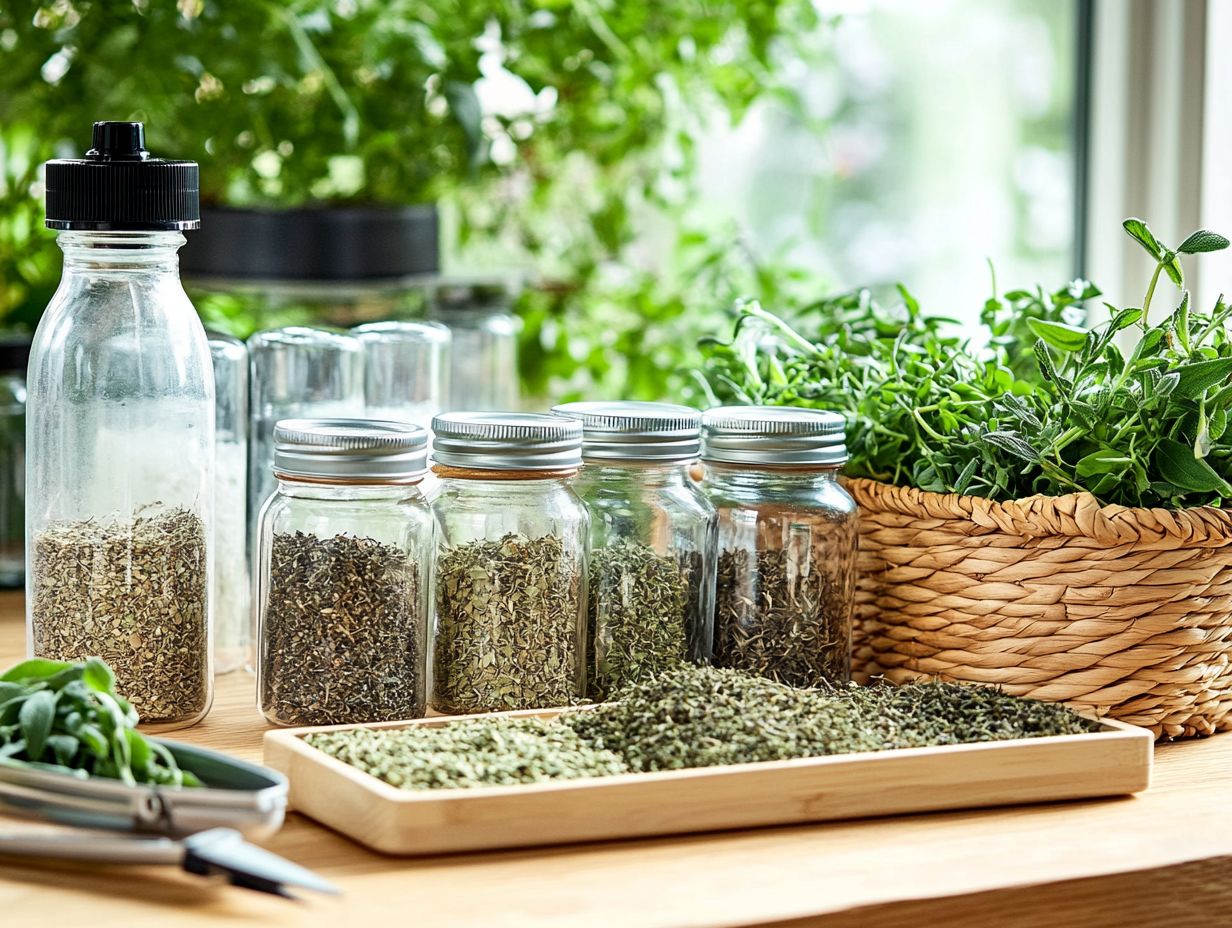
The potential sources and types of contaminants in herbal remedies can vary widely, encompassing everything from environmental factors to improper manufacturing processes. These issues may expose you to safety hazards and health risks.
Environmental pollutants, such as pesticides and heavy metals, can infiltrate natural products during their growth or after harvest. Inadequate storage conditions can create a breeding ground for bacteria and mold contamination, allowing harmful microorganisms to flourish. Improper handling during production can introduce pathogens, increasing the likelihood of contamination.
You might unknowingly consume herbal products tainted with these microbes, leading to unwanted health effects. You must understand these risks if you want to use herbal remedies safely. By staying informed, you can navigate these often-overlooked dangers and make wiser choices.
Health Risks Associated with Contaminated Herbal Remedies
The health risks linked to contaminated herbal remedies can carry significant consequences, particularly for certain demographics, such as the elderly, who may be more susceptible to side effects and health complications.
Using contaminated products can result in severe reactions that necessitate prompt professional advice. Grasping these risks is crucial to ensure safe usage, especially if you rely on herbal remedies to manage specific health conditions.
Understanding what s at stake gives you the power to make informed choices for your well-being.
Possible Health Impacts and Consequences
The potential health impacts and consequences of using contaminated herbal remedies can range significantly. They may lead to mild side effects or severe complications that necessitate medical attention.
- Herbal products contaminated with heavy metals or pesticides can cause long-term organ damage.
- They may also lead to acute poisoning, as highlighted by case studies documenting hospitalizations due to lead toxicity linked to specific traditional treatments from regions like Macapa in the Amazon.
- Some contaminants, such as bacteria or harmful fungi, can undermine immune function, leading to recurrent infections, especially among the elderly and children.
By examining specific incidents where herbal remedies resulted in adverse reactions, you gain crucial insights into the need for strict quality checks and safety rules within the herbal supplement industry. Studies published in BMC Complementary Medicine and Therapies highlight these concerns.
Keep Your Herbal Remedies Safe: Prevention Tips
Preventing herbal remedy contamination is essential for ensuring both safety and efficacy of herbal remedies. You can achieve this by adhering to best practices and quality standards that minimize exposure to potential safety hazards.
Regularly inspecting and selecting high-quality herbal products and being mindful of herbal registration can significantly reduce risks for consumers. Understanding the importance of safety in herbal medicine is especially important for vulnerable populations, like the elderly and children, who may be more susceptible to adverse effects.
Best Practices for Safe and Effective Use
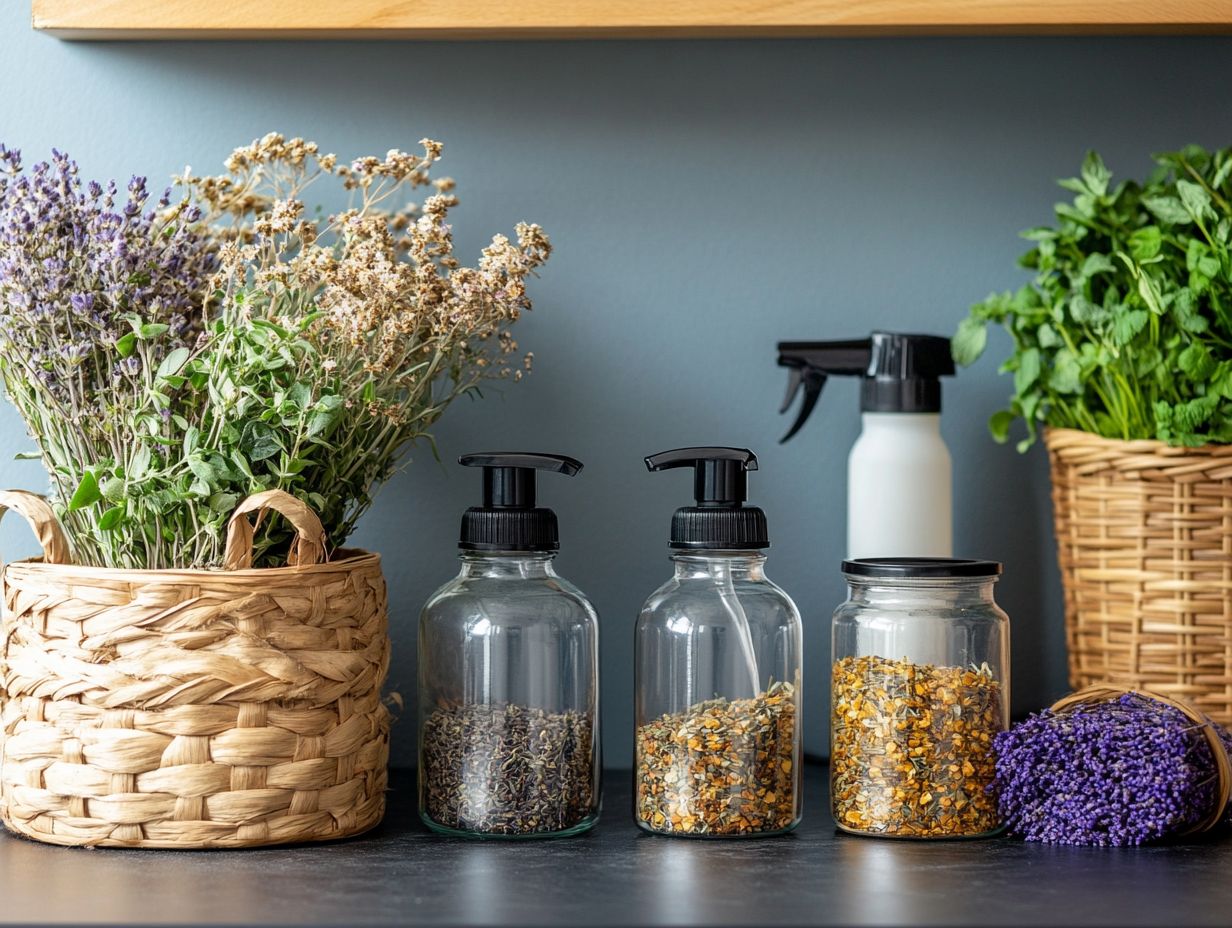
Implementing best practices for the safe and effective use of herbal remedies can significantly reduce health complications, ensuring you make informed choices.
First and foremost, it s essential to consult a qualified healthcare professional who understands herbal medicine before starting any new regimen. This critical step allows you to receive personalized advice tailored to your unique health needs.
Understanding the appropriate dosage is also vital, as excessive intake can lead to unwanted side effects. Familiarizing yourself with the potential side effects associated with specific herbs, along with any possible interactions they may have with prescribed medications, is equally important.
By taking these precautions, you can navigate the world of herbal remedies with greater confidence and safety, knowing you are making informed choices based on herbal medicine safety.
Ensuring Quality and Purity of Herbal Remedies
Your health matters! Ensuring the quality and purity of herbal remedies is paramount for your safety. This can be accomplished through careful checking and the selection of only the finest products.
Follow herbal registration guidelines and understand the active ingredients. This can significantly reduce the risk of health complications and negative effects. For optimal safety, refer to the safety protocols for herbal extraction and dosage. Your well-being deserves nothing less than the highest standards in herbal care.
Identifying and Choosing High-Quality Products
Identifying and selecting high-quality herbal products requires a keen understanding of labeling, sourcing, and regulatory standards that guarantee safety and efficacy.
When you evaluate herbal options, it’s essential to meticulously examine product labels for transparency in ingredient lists and the presence of certifications from reputable organizations. Certifications are from independent organizations that verify product quality. Additionally, when creating your own remedies, be sure to follow safety tips for creating herbal remedies. A product adorned with a seal from a recognized regulatory body often signifies a commitment to quality and safety.
Exercise caution with vague terms like “natural” or “pure”, as these can sometimes lead you astray. Being mindful of potential contaminants, such as heavy metals or pesticides, is crucial to safeguarding your health.
Ultimately, making informed choices gives you the power to select herbal products that align with your well-being and health goals.
Frequently Asked Questions
What is herbal remedy contamination and why is it a concern?
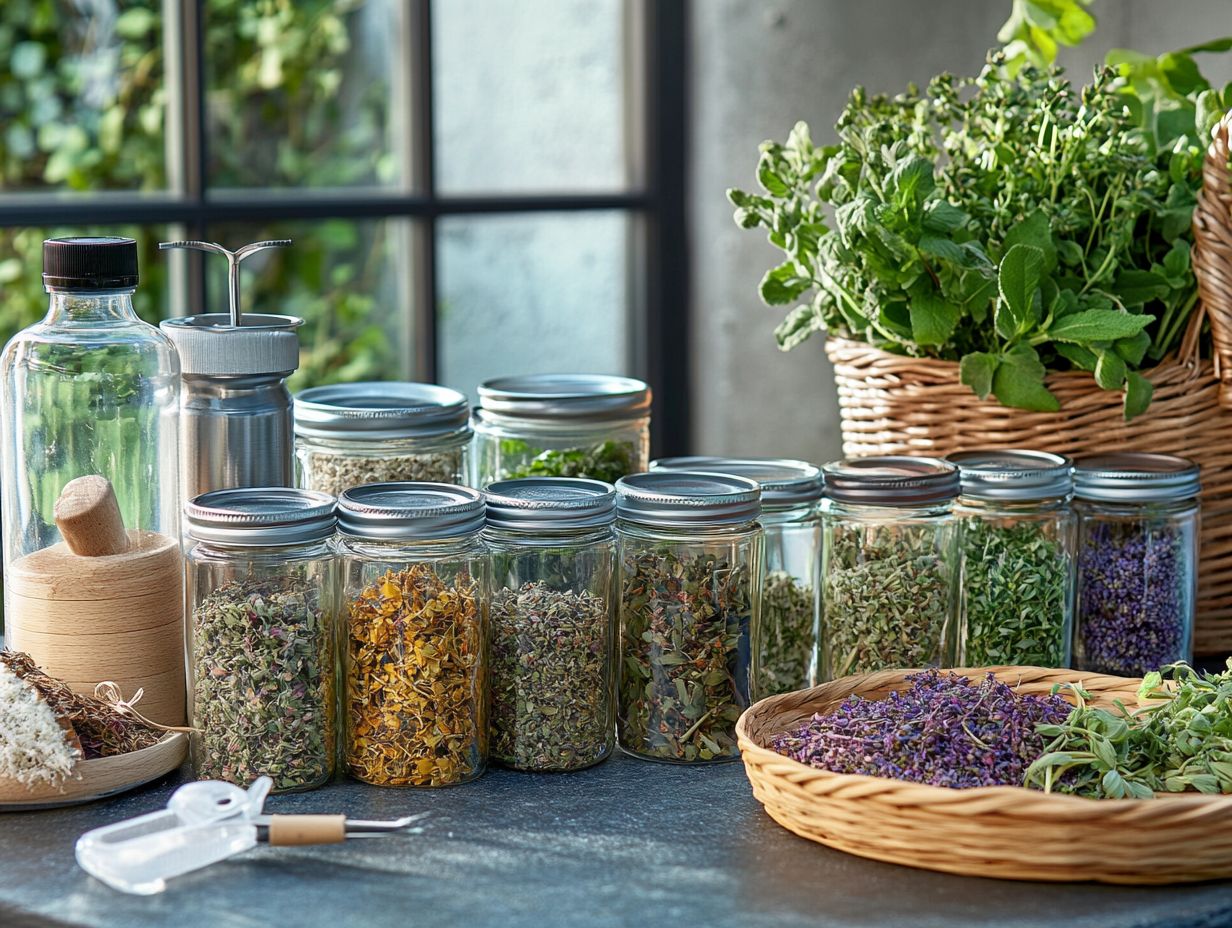
Contamination means harmful substances, like pesticides and heavy metals, are in herbal products. This occurs due to microbial contamination and other safety hazards. It is a concern because it can lead to adverse health effects, including potential issues like liver disease and kidney disease, in individuals who consume these contaminated remedies.
How can I identify if an herbal remedy is contaminated?
Unfortunately, it is not always possible to visually identify herbal remedy contamination. However, purchasing products from reputable sources and looking for third-party certifications can help ensure the quality and safety of herbal remedies.
What are some common sources of herbal remedy contamination?
- Contamination during cultivation.
- Contamination during harvesting.
- Contamination during processing.
- Contamination during packaging.
- Contamination during storage.
- Herbs grown in polluted environments.
- Cross-contamination during production.
How can I prevent herbal remedy contamination at home?
To prevent contamination at home, always make sure to properly wash and store herbs before using them. Additionally, avoid using contaminated water or soil when growing herbs in your garden. It is also important to regularly clean and disinfect any equipment used to prepare herbal remedies.
What should I do if I suspect an herbal remedy is contaminated?
If you think an herbal remedy is contaminated, stop using it right away. Contact the manufacturer or report it to health authorities for more information.
Are there any regulations in place to prevent herbal remedy contamination?
Yes, the FDA has regulations in place to ensure the safety and quality of herbal remedies sold in the United States. However, it is important to do your own research and purchase from reputable sources to further minimize the risk of contamination.
Check your herbal products today for safety!

